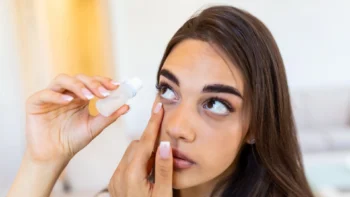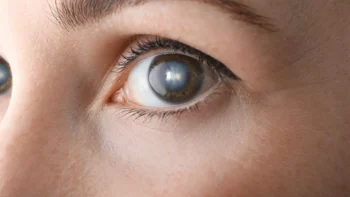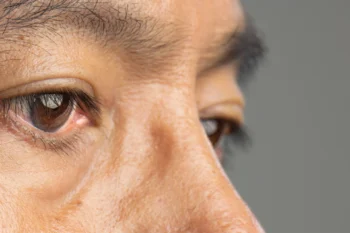Technology. There’s no doubt everyone loves electronic devices, but many wonder if technology and eye problems go hand in hand. Warnings about blue light are the most common. It’s tough to escape blue light in the modern world; we are exposed to it when using computers, smartphones, tablets, or television.
The worry about blue light relates to digital eye strain (DES). We use electronic devices in so many everyday activities, and blue light has been linked to dry eyes, insomnia, and vision problems. The days of being unplugged are already a distant memory. There’s no going back.
Technology use grows exponentially
You may be able to remember a time before technology permeated our existence, but in the past two decades, the world’s use of the internet has exploded. Over 63% of the world has access to the internet, and we send 306 billion emails each day. Social media dominates our lives, accounting for a massive share of internet use. Nearly half the world watches at least an hour of video online every day. Online shopping generated 653 billion US dollars in 2018 alone.
The COVID-19 pandemic and continued social distancing make it clear that technology is here to stay. Online activies continues will become even more important to us.
Although researchers aren’t clear why myopia (or nearsightedness) has become so common, it has. Since the 1970s, myopia around the world has been on the rise. Close to 42% of all citizens are nearsighted in the US, while in Asia, a whopping 90% of teens and adults need vision correction. We should have concerns about technology and eye health.
Screen time eye health restrictions and our kids
Many parents feel guilty over how much screen time their kids get. It can be a challenge to limit access when schools use screens for so many assignments.
You might not realize that exposure to daylight is crucial for children’s eye development. If they spend too much time indoors on screens, researchers suggest they lose out on exposure to UV light they need for healthy eyesight. The fact that myopia in children has risen dramatically in the past few decades supports these findings.
Kids can focus with an intensity that most adults lack. With screens generally positioned for adults, eye strain is likely. Children also have a hard time adjusting to distance vision after long stretches of close-focused attention, which puts a burden on their focus flexibility. People of all ages are prone to dry eyes when using screens because they blink less often. This can cause blurriness if it interferes with the moisture layer that covers the surface of the eye.
Advice from a Las Vegas eye doctor: how to avoid digital eye strain
Technology isn’t going away, but there are myriad ways to improve our eye health and minimize adverse effects from screens. Walking away from your devices is easier said than done, but if you can incorporate the following suggestions, your eyes will thank you.
- Take breaks. Get into the habit of getting up and walking around every so often. It would be best to model these habits for your kids, so it becomes second nature. Make it fun by taking dance breaks or use the time to do something around the house. Does your job require you to sit at the computer all day? Your eyes need an occasional break. Focusing on a screen slows your blink rate and keeps your eyes from adjusting between distance and close-up vision. It can help to think 20/20/20, meaning that every 20 minutes, you should take 20 seconds to focus on something 20 feet away. A break allows you to blink, use focus flexibility, and your eyes’ natural lubrication will help soothe eye strain.
- Adaptations for your device. Increase font sizes to make the text easier to read. Use a blue light filter on your phone, or wear blue light blocking glasses. These will cut the glare and avoid overtaxing your eyes. Make sure lights aren’t hitting your screen and making it harder to read. Adjust the screen brightness to a comfortable contrast level.
- Distance counts. Place computer screens correctly: your eye level should be near the top of the monitor and you should be about arm’s length from the screen. Incorrectly placed screens make eyes work harder and can also cause neck and backache.
- Dry, itchy eyes? Irritation is a clear sign of eye strain, so take a break or use artificial tears to lubricate your peepers.
- Set boundaries around devices. Technology has a place in our lives, but there is more to life, and finding the balance as a family will foster close relationships and healthy habits. Whether your rules include no devices two hours before bed or no texting during dinner, clear rules that everyone follows are essential. Show your kids how many other things life has to offer, and remember that children need natural light to develop their vision. Go old school: make cookies, play tag, ride bikes, or curl up with a good book. Even if you aren’t modeling good habits for kids, the advice is the same. You are worth those good habits, too.
- Schedule your next eye exam. Eye health is integral to overall health. Many conditions start with no symptoms, so comprehensive eye exams catch problems before they develop and permanently harm your vision. Young children generally have vision screenings at their pediatrician’s office or school. These screenings should not be confused with a comprehensive eye exam; instead, screenings are a general check of eye alignment and visual acuity. If your child fails one of these screenings, make an appointment with an optometrist or ophthalmologist. If your child has any vision complaints or a family history of eye disease or conditions, schedule a comprehensive eye exam. An eye doctor should also monitor children with learning disabilities, developmental delays, Down syndrome, or neuropsychological disorders such as ADHD, autism, or epilepsy.
At Brimhall Eye Center, we love to see our patients happy and healthy. Your eye doctor will make sure no chronic conditions develop and answer all your questions about technology and eye health. If you follow our suggestions, eye strain should be avoidable. Contact us today for an appointment. We can’t wait to see you!





